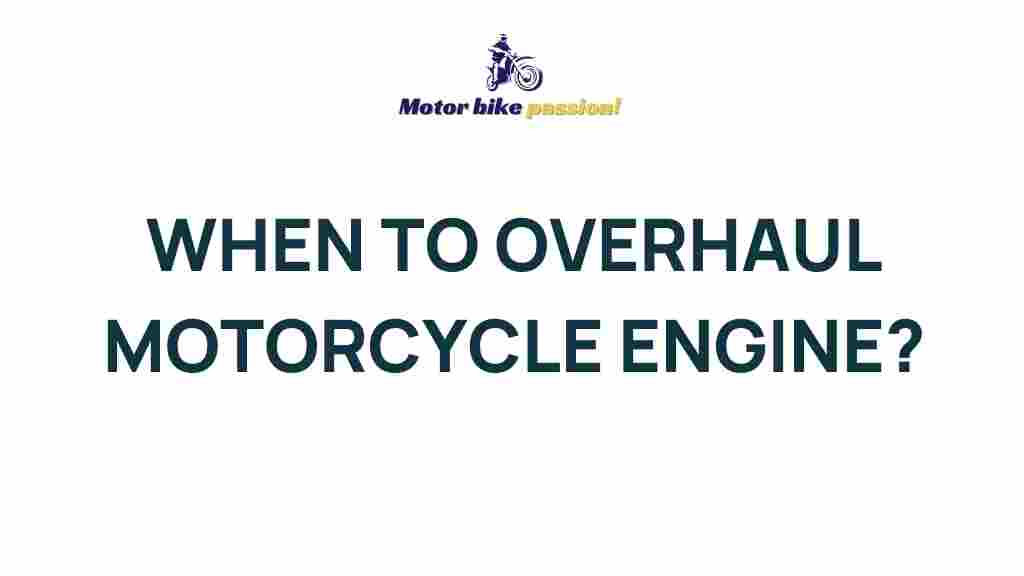Unveiling the Mystery of Motorcycle Engine Overhauls
Motorcycle enthusiasts often marvel at the intricate mechanics of their machines. However, like all mechanical devices, motorcycles require regular maintenance to ensure optimal performance. One critical aspect of maintenance is the motorcycle engine overhaul, a process that can seem daunting but is essential for keeping your bike in peak condition. In this article, we’ll dive deep into what an engine overhaul is, why it’s necessary, and how to identify the signs that your motorcycle might need one.
What is a Motorcycle Engine Overhaul?
A motorcycle engine overhaul refers to the process of disassembling the engine to inspect, repair, or replace its components. This is often done to restore the engine’s performance and longevity. Overhauls can range from minor repairs to complete rebuilds, depending on the engine’s condition and the owner’s goals.
Why is Engine Overhaul Necessary?
Understanding the necessity of an engine overhaul is crucial for any motorcycle owner. Here are a few reasons:
- Performance Restoration: Over time, engine components wear out, leading to reduced performance. An overhaul can restore power and efficiency.
- Preventative Maintenance: Regular overhauls can prevent more significant issues down the road, saving you money and hassle.
- Increased Lifespan: By addressing wear and tear, you can extend the life of your motorcycle.
Signs Your Motorcycle Needs an Overhaul
Recognizing the signs that your motorcycle needs an overhaul is essential. Here are some key indicators:
- Unusual Noises: Knocking or tapping sounds from the engine can indicate internal issues.
- Loss of Power: If your motorcycle struggles to accelerate or maintain speed, it might be time for an overhaul.
- Excessive Smoke: Blue smoke can indicate oil burning, while black smoke may signal a fuel issue.
- Frequent Overheating: If your bike overheats regularly, it could be a sign of engine problems.
- Increased Oil Consumption: If you find yourself adding oil frequently, the engine might have internal leaks.
A Step-by-Step Guide to Motorcycle Engine Overhauls
Conducting a motorcycle engine overhaul can be a complex process, but with the right knowledge and tools, it can be manageable. Here’s a detailed guide to help you through the process:
Step 1: Gather Necessary Tools and Materials
Before starting, make sure you have the following tools:
- Socket set
- Wrenches
- Screwdrivers
- Torque wrench
- Engine oil
- Gaskets and seals
- Replacement parts as needed
Step 2: Prepare Your Workspace
Ensure you have a clean, organized workspace. A well-lit area with ample space will make the process smoother. Make sure to have a service manual for your specific motorcycle model for reference.
Step 3: Remove the Engine from the Motorcycle
Carefully disconnect the battery and remove any components obstructing the engine, such as the fuel tank and exhaust. Use the service manual to guide you through the disassembly process. Document each step with photos for easier reassembly later.
Step 4: Disassemble the Engine
Once removed, begin disassembling the engine. Take your time and label parts as you go:
- Remove the cylinder head
- Take off the cylinder block
- Inspect the piston and rings
- Check the crankshaft and bearings
Step 5: Inspect Components
Thoroughly inspect all components for wear and damage. Look for:
- Scoring or scratching on cylinder walls
- Worn piston rings
- Damaged gaskets and seals
- Cracked or warped components
Step 6: Replace or Repair Parts
Depending on your inspection, decide which parts need replacement and which can be repaired. It’s essential to use quality parts for durability and performance.
Step 7: Reassemble the Engine
Once repairs are made, start reassembling the engine. Follow the disassembly steps in reverse and ensure all parts are correctly torqued according to the specifications in your service manual.
Step 8: Reinstall the Engine
Carefully reinstall the engine back into the motorcycle frame. Reconnect all components and ensure everything is secure.
Step 9: Test the Engine
Before taking your motorcycle for a ride, conduct a thorough check. Start the engine and listen for any unusual noises. Check for leaks and ensure the motorcycle runs smoothly.
Common Troubleshooting Tips
Even after an overhaul, issues may arise. Here are some troubleshooting tips:
- Engine Won’t Start: Check the battery, fuel supply, and spark plugs.
- Overheating: Ensure the cooling system is functioning and that there are no leaks.
- Poor Performance: Recheck your timing and fuel mixture.
Maintenance Tips to Extend Engine Life
After an overhaul, maintaining your motorcycle is key to its continued performance. Here are some essential maintenance tips:
- Regular oil changes
- Consistent inspections of the cooling system
- Keeping the air filter clean
- Monitoring tire pressure and condition
- Checking brake fluid and brake pads
Additionally, consider using high-quality fuel and additives that can help improve engine performance and longevity.
Conclusion
An engine overhaul is a significant undertaking, but it can breathe new life into your motorcycle. By regularly maintaining your bike and recognizing the signs that an overhaul is necessary, you can ensure it remains a reliable and thrilling ride for years to come. For more detailed guides and resources, check out our maintenance tips page. If you’re unsure about performing an overhaul yourself, don’t hesitate to seek professional help to ensure the best results.
Investing time and effort into your motorcycle’s engine will pay off in performance and enjoyment. Happy riding!
This article is in the category Maintenance Tips and created by MotorBikePassion Team
